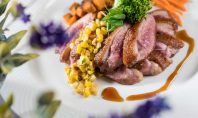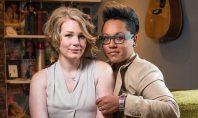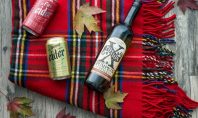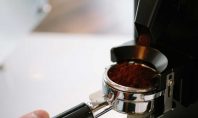Crystal Lee Lucas
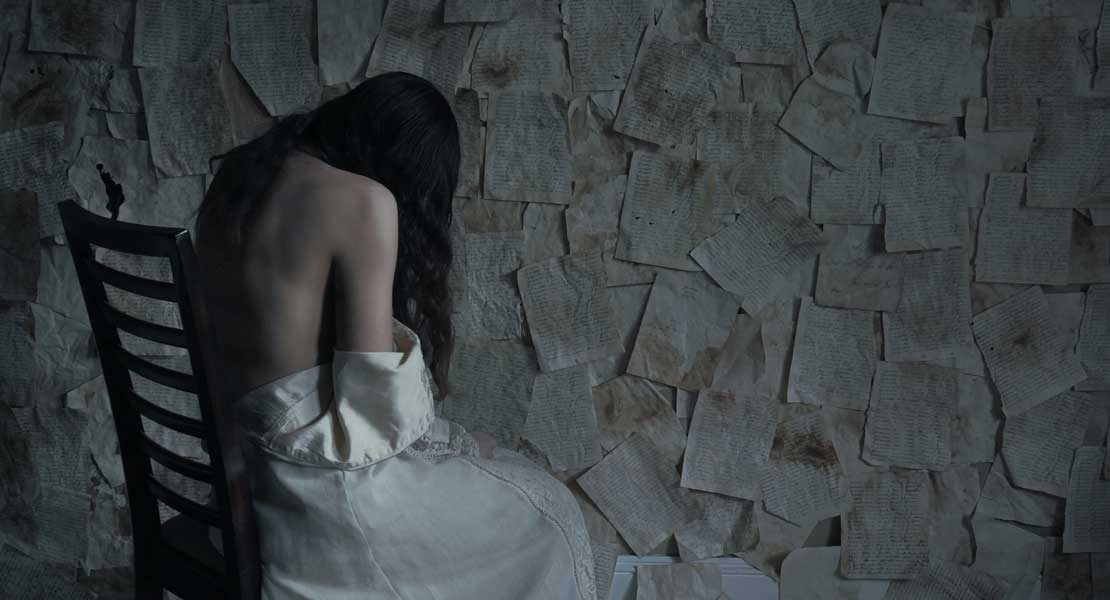
 If “haunting” is a theme for October, one Bethlehem artist and photographer shoots photographs that embody—or disembody—that feeling best. The work of Crystal Lee Lucas, a self-taught photographer at age 25, can be described as evocative, historical, elegant, and spooky.
If “haunting” is a theme for October, one Bethlehem artist and photographer shoots photographs that embody—or disembody—that feeling best. The work of Crystal Lee Lucas, a self-taught photographer at age 25, can be described as evocative, historical, elegant, and spooky.
Influenced by the mourning rituals of the Victorian era (a time she notes was “incredibly problematic for a variety of reasons”), she uses a toolbox of handcrafted props and fragile antiques with muted colors and the woods of Pennsylvania. Her photos breathe life into melancholy feelings, while still managing to take your breath away.
To see your photography for the first time is both delicate and shocking. How would you explain it in your own words?
My photography is a construction of my own visual dictionary of emotions that I can’t quite put my finger on or name. Inner turmoil, depression, anxiety—in our spectrum of emotions, diagnosing a single ache in our hearts can often be a much more complex matter. My exploration through photography is my way of coming to terms with the past, present, future, and everything felt along the way.
How would you describe your aesthetic?
I create dark art photography greatly inspired by the Victorian Era. I imagine I am telling stories through a visual medium of gothic novels that were never written.
Every image has haunting quality, whether that be in a form of obsessiveness or being consumed in emotions that are difficult and impossible to escape, like a soul unable to rest and detach itself from a home.
Have you always considered yourself to be an artist?
I haven’t identified myself as an artist until very recently, but I have always been an artistic person. Art classes were often the only classes that allowed me to focus, earn good grades, and actually enjoy them.
What mediums other than photography have you tried?
Other than photography, I’ve taught myself how to embroider and write calligraphy over the last couple years. This year, I hope to learn about bookmaking and maybe also take a violin class.
How has the look of your work shifted over time?
Over the years, my visual dictionary has become more streamlined. I reference early Victorian photography often, especially spirit and post mortem photography. Those photographs hold feelings of mystery and a dire need to communicate and remember those that have passed. I think these feelings haunt us all.
What is important to you outside of your work?
It’s necessary for me to spend time in solitude, in nature, or both at once when possible. When I’m not taking pictures, I’m often reading sad poetry like Sylvia Plath or watching old films in amazement and wonder, such as A Trip to the Moon by Georges Méliès.
Tell us about some of the meticulous work that goes into curating and crafting props, backgrounds, clothing, or the environment of a photo.
All of my props are handmade by me, or are objects from my home that has inspired me.
My piece “And They Keep Me in This Room” was inspired by the short story The Yellow Wallpaper. It tells the story from the secret diary of a women enchanted and madly obsessed with the yellow wallpaper in her bedroom, which symbolized her entrapment, obsessive thoughts, and depression.
I really wanted to consume myself within that piece, similar to how she is consumed with the wallpaper. I tore blank pages from a few journals and laid them in a quick bath of tea and spread them on the floor to dry. Once dry, I wrote by hand on almost every tea stained page. This ceremony of writing expanded over a few days. I placed them on the wall and realized there weren’t enough, so I did the process all over again until the wall was overflowing and overwhelmed with pages.
This piece took two weeks to complete, and I would do it all over again. The creative process that must happen to get to a final image, that most people don’t see, is quite satisfying and fulfilling to me.
The subjects in your photos are often contorted or seemingly put in uncomfortable positions. How do you accomplish that?
Sometimes I get my friends to do weird things for me, like sitting for 2 hours to let me cocoon them in thread for a photo (“The Obsessor”). But most of the time, I will model in my own pictures. My photography is a personal visual diary, and I am the subject and puppet of that diary. There are times I want the body to create certain shapes, and I can accomplish the twists and bends in my vision.
What is the overlap between your photography and your personal style?
Many of the objects in my photographs are items that adorn our home. Most of the clothing pictured are pieces I have purchased and wear, aside from the very fragile and older pieces, like some mourning capes and a few fragile dresses.
At the time of print, you have more than 52,000 Instagram followers. What does a platform like Instagram do for artists’ self-promotion and audiences?
I didn’t have many friends growing up, and often felt like I couldn’t relate to anyone. Now there are so many kindred spirits from all over the world I connect with or admire through my phone, and I don’t feel so alone. The best part of Instagram is that it provides a free platform for artists to build a community of like-minded individuals.
You’ve received notoriety in features from gallery shows to international fashion magazines. Where has your work been featured?
I’ve been in group exhibitions in Pennsylvania and Massachusetts, and currently in New York through November. My first solo show was earlier this year at Central Tattoo Studio in Philadelphia. My work has been published in a number of magazines including W, Glamour, D2, and Philly Voice.
What do you see as progression and evolution of your photography or other artistic practices?
I have been so eager to learn how to develop my own film and make prints for a very long time, so I’d like to step into film photography. There is something nostalgic and romantic about film, and most of my favorite photographers still shoot using film.
I have shot a few weddings, but am most passionate about and eager to work with fashion designers, boutiques, and other small businesses.
You shoot a lot of photos in the woods and decaying or abandoned homes. How does living in the Lehigh Valley serve as an advantage to executing your vision?
Although my partner Dylan and I would prefer to live on top of a mountain, we have a house in Bethlehem that we enjoy. We’re both artists who appreciate nature as inspiration and access to art communities, so being a short drive from the woods or large cities like Philly and New York makes the Lehigh Valley the best of both worlds.
To see more of Crystal’s work, visit crystalleelucas.com or follow her on Instagram @crystalleelucas.



